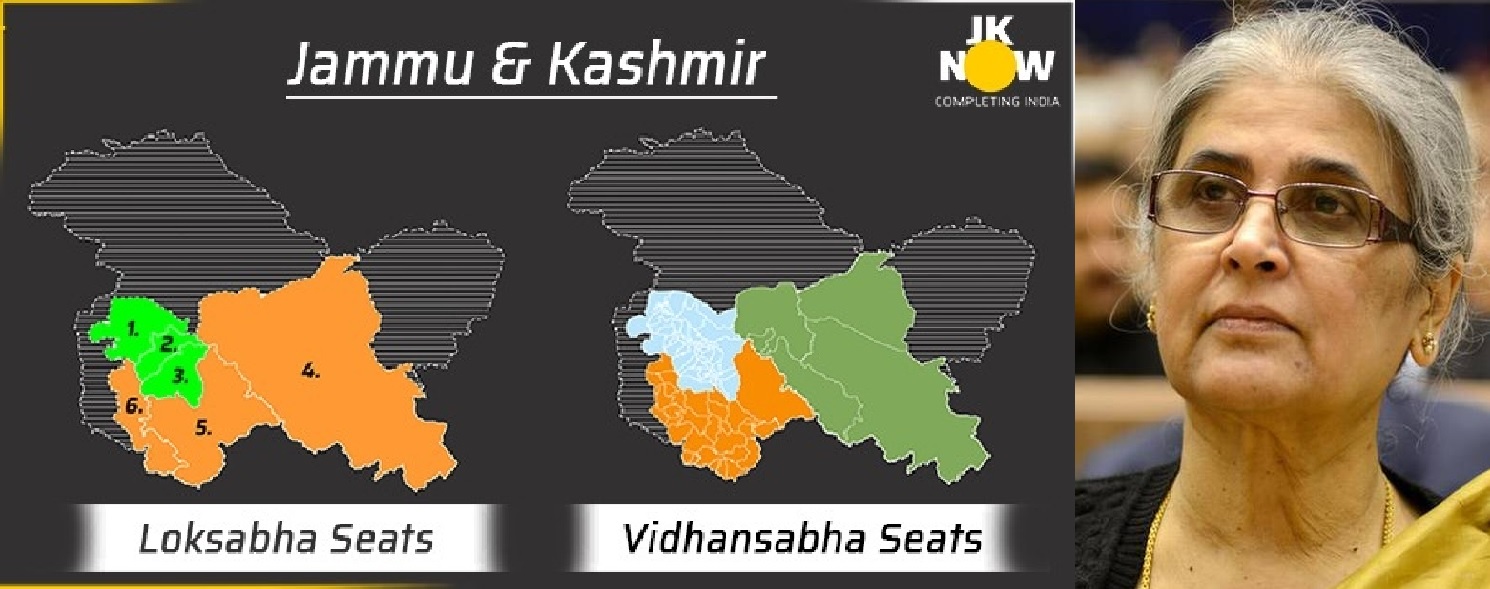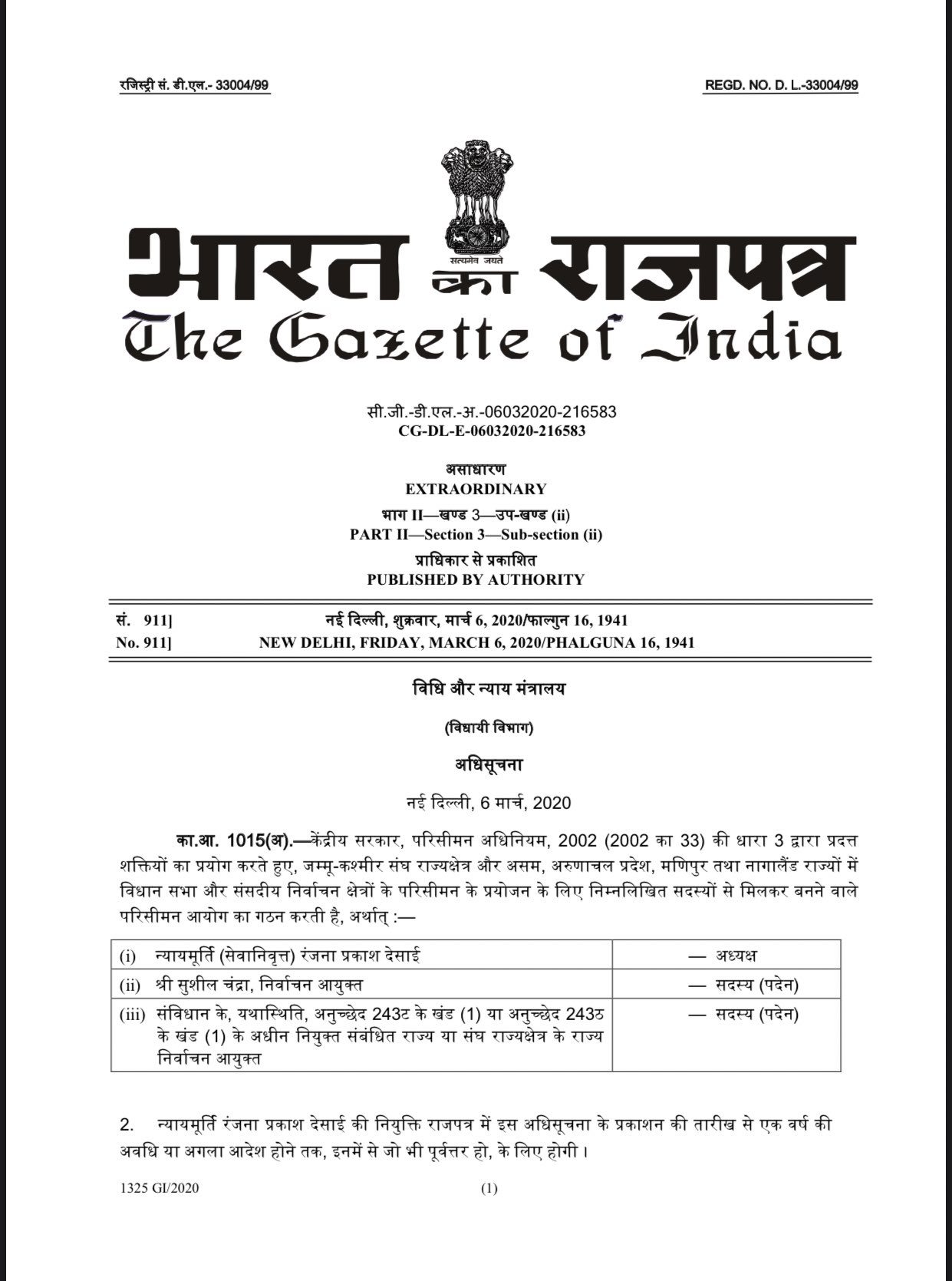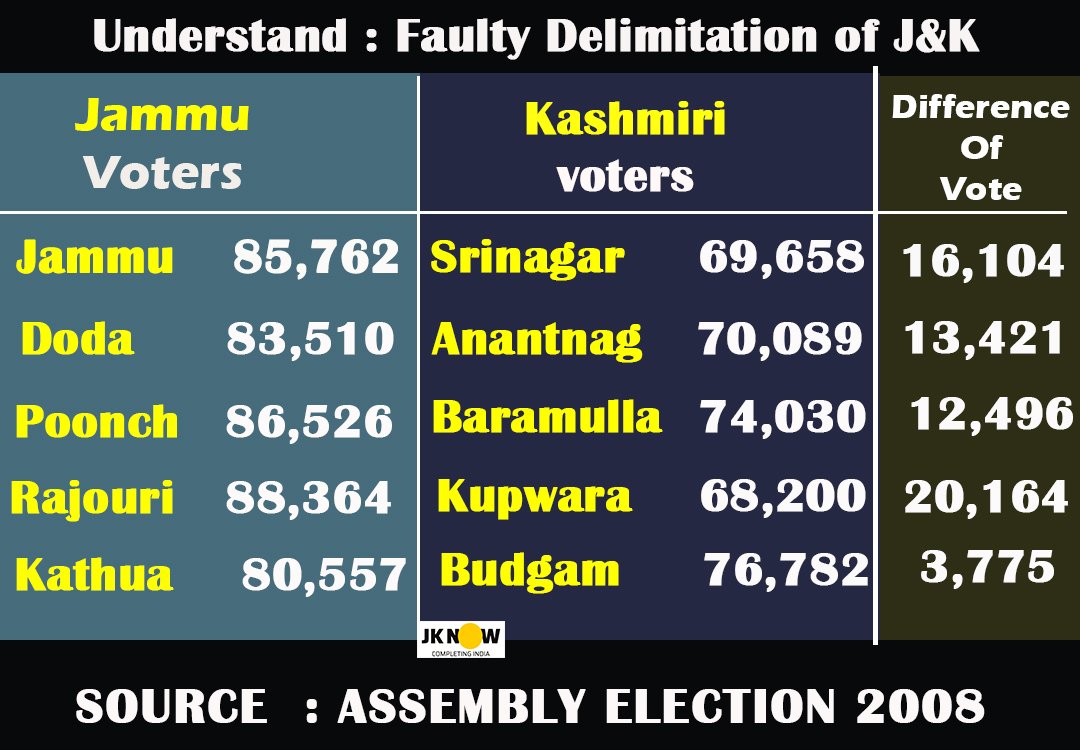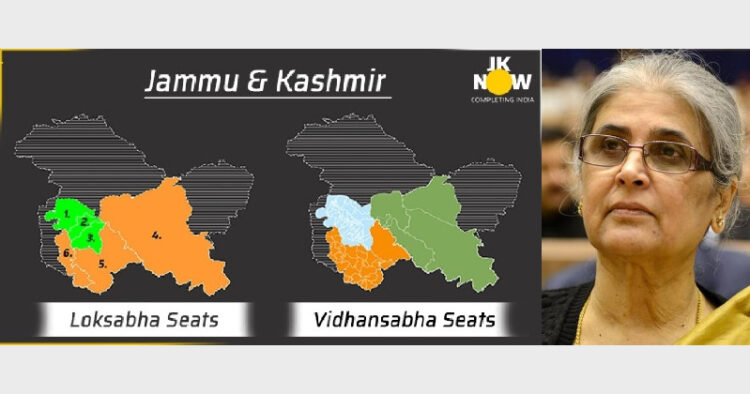
Retired Justice Ranjana Prakash Desai of the Supreme Court will be the chairman of the delimitation commission
The Central Government has constituted a Commission for delimitation in 5 states including Union Territory of Jammu and Kashmir. The commission will work for delimitation of assembly and Lok Sabha seats in Jammu and Kashmir, Assam, Arunachal Pradesh, Manipur and Nagaland. Retired Justice Ranjana Prakash Desai of the Supreme Court has been made the chairman of this commission. The other ex-officio members of the commission include Central Election Commissioner and the Election Commissioner of the respective state as per the notification for the formation of the commission.
The time limit of this commission has been fixed for one year but the deadline can be extended if required. The gazette notification issued is as below:

(Image credit: JammuKashmirNow)
The formation of this commission is seen as the first step in fulfilling the long-standing demand of Jammu and Kashmir. The number of assembly seats in the union territory has been heavily lopsided in the favor of Kashmir which had much lesser voters and area compared to Jammu. The demand for delimitation has been pending for the last 6 decades. After the abrogation of article 370, it was hoped that political injustice to Jammu region would also be eliminated through delimitation. With the Delimitation Commission now being constituted by the Central Government, it hoped that another historical injustice would be corrected.
It was always alleged that the Kashmiri Muslim leaders starting with Sheikh Abdullah till the most recent leaders had deliberately cheated Jammu and Ladakh in terms of the number of assembly seats. Here are 10 facts related to history and politics of delimitation in Jammu and Kashmir which prove the allegation:
1. Delimitation done in 1951 was extremely unjust and discriminatory, especially to the backward and far flung areas of Jammu and Kashmir. The rules laid down by the Representation of People’s Act of 1957 to elect MLAs was also ignored all these years.
2. The guidelines of Section 50 of the Constitution of Jammu and Kashmir and Section 4 of Representation of People’s Act of 1957, the order of Interim Delimitation Committee formed in 1951 and recommendations of Justice KK Gupta Delimitation Commission in 1991 were also neglected. To date, these guidelines and the rules related to Delimitation have not been followed in Jammu and Kashmir.
3. According to Jammu and Kashmir People’s Representation Act, population is not the only basis of delimitation as it says that geographical area, conditions, facilities available for people are also to be considered. If these criteria are implemented then, Jammu will have more assembly seats than the Kashmir Valley.
4. Despite the addition of Doda, Rajouri, Kathua and Udhampur in Jammu, only 21 MLAs represent these districts which form a total area of 21,522 sq km area. Compare this with the 31 MLAs who represent the districts of Pulwama, Anantnag, Srinagar and Budgam which form a total area of only 8,981 sq km.
5. According to the 1941 census the population of the state of Jammu and Kashmir was 40,21,616 out of which 20,01,557 was in Jammu, 17,28,686 in Kashmir and 3,11,915 in the population of Gilgit, Skardu, Kargil and Ladakh. It is surprising that the census of 1951 was not considered during delimitation in J&K and instead the 1941 census was considered. This was fraudulent as a large number of Hindus and Sikhs had fled Pakistan-occupied Jammu and Kashmir due to the invasion of Muslim hordes in October 1947. Therefore, the 1941 census should not have been made the basis of determining the constituency.

(Image credit: JammuKashmirNow)
6. Sheikh Abdullah’s Interim government set aside 25 seats out of 100 for Pak Occupied J&K, 43 out of the remaining 75 were earmarked for Kashmir, only 30 for Jammu and just 2 for Ladakh. The distribution of seats by Sheikh Abdullah’s Interim government assumed that a large part of Jammu has gone under the occupation of Pakistan, hence both the population and the seats of Jammu would be less. The population of POJK refugees settled in Jammu were ignored by Sheikh Abdullah’s Interim government.
7. Delimitation Commission was not formed till 1981 because the politicians of Kashmir knew that if delimitation was done honestly, the seats of Jammu would increase. But when 30 years later when the Delimitation Commission was formed in 1981, its work was stretched till 1995. Despite taking so long, this Commission failed to implement the Representation of the People’s Act of 1957 in J&K as none of the criteria set for delimitation were considered.
8. In 1990, millions of Hindus were driven out of the Kashmir Valley and once again a large number of people settled in Jammu. It directly impacted the demographics as the population of Kashmir decreased and the population of Jammu increased. But the 1995 census did not take this change in demographics into consideration and neither the seats in Jammu were increased nor the seats in Kashmir decreased.
9. Present lopsided delimitation has affected not only the assembly seats but the parliamentary seats too. As per the delimitation prevalent in J&K, an MP of Kashmir handles an area of 5000 sq km while the MP of Jammu has to handle 13,000 sq km.
10. In 2002, the leaders of Kashmir did another trick by amending Section 47 of the 29th Amendment in Jammu and Kashmir Constitution and postponed the delimitation to the year 2031. By doing this, the Kashmiri leaders ensured that the power to rule J&K remains with them till 2031. Even Section 49 was made dormant as a result of which the number of Scheduled Caste Seats would not be increased till 2031, thus directly hurting the interests of Dalits of Jammu and Kashmir.
(Information sourced from JammuKashmirNow)














Comments